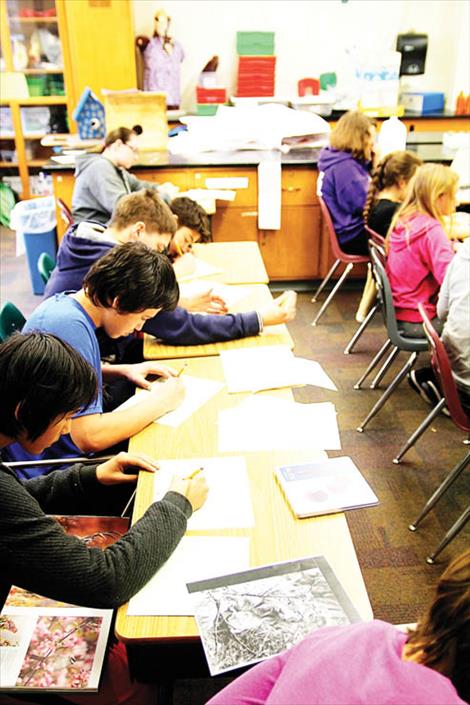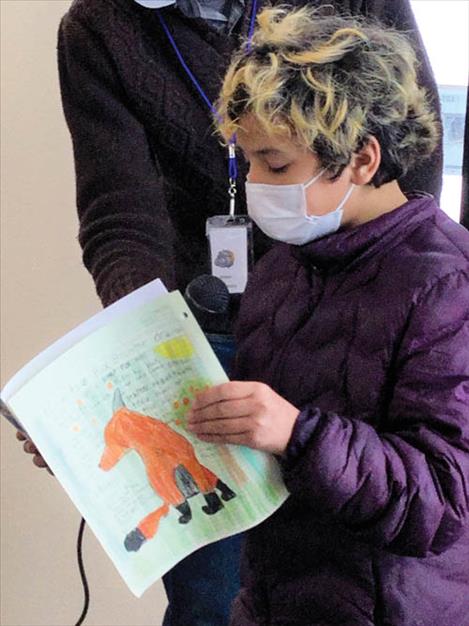Grant funds writing residencies in seven Lake County schools
Hey savvy news reader! Thanks for choosing local.
You are now reading
1 of 3 free articles.
FLATHEAD RESERVATION — The Young Voices of the Mission Mountains, a creative writing residency program for Salish and Kootenai students, has just received $30,000 in funding through a Grant for Arts Project award.
Orchestrated by the Missoula Writing Collaborative, the grant will fund the payroll and travel for 12-week writing residencies in seven schools on the Flathead Indian Reservation: Arlee, Charlo, Dixon, K. William Harvey, Pablo, Ronan, and St. Ignatius.
Started in 2019, the residency allows authors from the Collaborative to visit primarily fourth and fifth grade classrooms once per week to teach poetry and art with a strong Native American emphasis. Held online during much of the pandemic, this year the writers will be allowed to return to schools.
These hour-long visits are broken into three 20-minute sessions: First, the children are taught a poem that they can use as a model, typically from Native American authors such as elder Vic Charlo. Then, the kids are asked to write a poem of their own based on that prompt. Finally, each child gets to read their work aloud.
“What’s really great is they get a lot in that hour. They get exposed to poetic literature and they’re able to write about their lives,” said Missoula Writing Collaborative Executive Director Caroline Patterson. “They’re able to read what they write and listen to other kids read what they wrote, so the kids inspire each other too … it makes them see each other differently.”
Students will be introduced to ekphrastic poetry, also known as poetry responding to art, inspired by the work of Native American artists such as Corwin “Corky” Clairmont and Jaune Quick-to-See, both accomplished artists belonging to the Confederated Salish and Kootenai Nation.
Other Native American types of poetry will also be taught, including form poetry (odes and letter poems) and free verse (poems about imagination, memory, and places). The variety is important, as Patterson explained, “Different kids respond to different prompts.”
Additionally, students will engage in creating ledger art, a narrative drawing or painting on paper or cloth. Thanks to storyteller Aspen Decker, students will hear stories told in Salish, learn some Plains sign language, and make up their own stories and poems along with creating their ledger art.
At the end of the 12 weeks, the writer assigned to the school will produce an anthology of poems for those students, allowing every student to see their writing in print that they will be able to keep. Finally, a reading is held, which parents can attend, though during the pandemic these readings have typically been filmed instead of allowing a live audience.
Beyond connecting with art, the program forges a connection between the writers and students as well. Writers return to the same schools each year, and according to Patterson, students are excited to know they will have that writer to work with as they go into the next grade.
Writer Caroline Keys, who has worked with Arlee and Pablo elementary schools for several years, was shown that enthusiasm in last year’s reading.
“The kids were so excited to see her in person,” Patterson laughed. “They just wanted to share everything they’d written for her.”
Ultimately, Patterson explained, the program not only fosters a connection to Native American art but provides a crucial outlet for kids during a difficult time in the world.
“It’s amazing how little kids are able to express what they feel,” Patterson stated. “(The program) is really great. It helps kids, especially during the pandemic, when kids are struggling with isolation and their social and emotional health. It helps them to express whatever, whether they’re happy, or sad, or lonely ... It’s really important to get that out.”

















